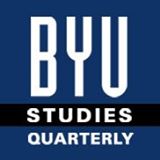BYU Studies Quarterly

Abstract
Jacob Hamblin embodies one of the more colorful and interesting Mormon pioneers in Utah Territory during the second half of the nineteenth century. During his long and eventful life, he wore many hats--explorer, frontiersman, Indian agent, missionary, colonizer, community leader-- and wore them well. Born on April 6, 1819, on the Ohio frontier, Hamblin left the family farm at age nineteen to strike out on his own. After nearly dying during a cave-in at a lead mine in Galena, Illinois, he collected his wages and traveled to Wisconsin to homestead. In 1839, he married Lucinda Taylor and began farming and raising a family.
Hamblin's destiny changed after listening to Mormon elders preach the restored gospel. They baptized him into The Church of Jesus Christ of Latter-day Saints on March 3, 1842. Lucinda refused to travel west with the Saints and left her husband. Hamblin then married Rachel Judd, crossed the plains to the Great Basin, and settled in Tooele Valley southwest of the Great Salt Lake. When he was called out to fight Goshutes who were raiding cattle from the Mormon settlers, Hamblin had a remarkable experience that convinced him that if he never took the life of an Indian, he would never be killed by an Indian. Hamblin then learned their language, spent time with them, and adopted an Indian child into his family. These tendencies sometimes put him at odds with his ecclesiastical and "military" leaders, but his associations with native tribes often proved to be beneficial.
Recommended Citation
Compton, Todd M. and Buckley, Jay H.
(2014)
"A Frontier Life: Jacob Hamblin, Explorer and Indian Missionary,"
BYU Studies Quarterly: Vol. 53:
Iss.
3, Article 15.
Available at:
https://scholarsarchive.byu.edu/byusq/vol53/iss3/15
